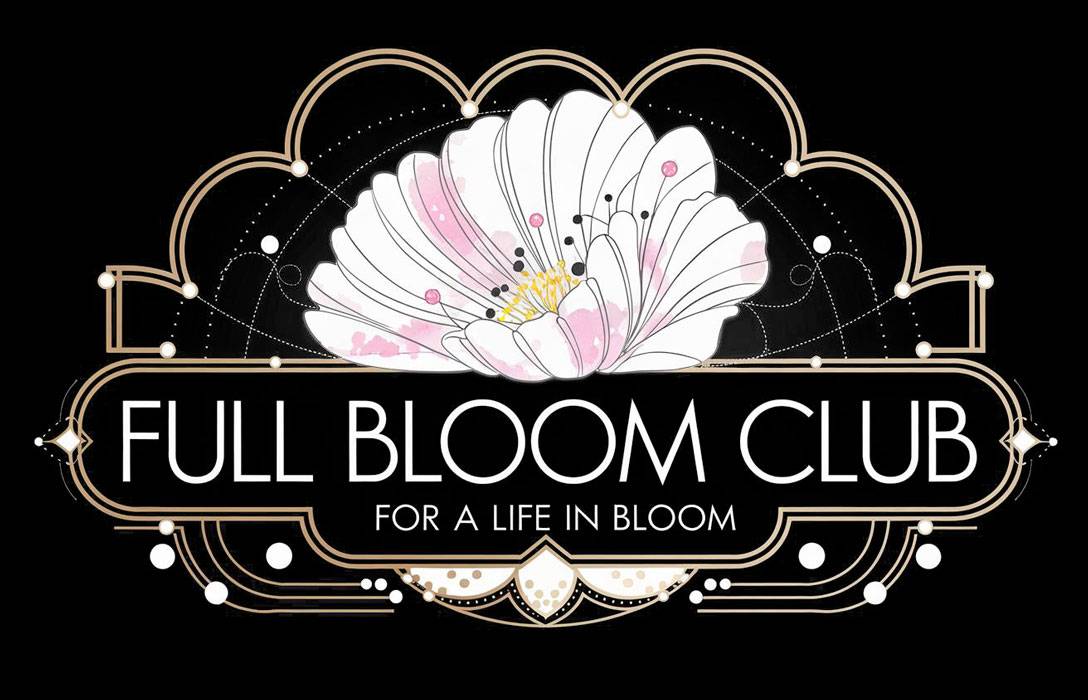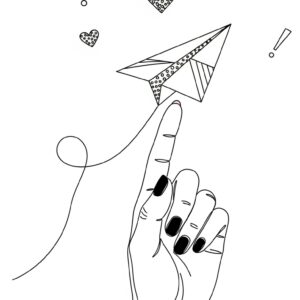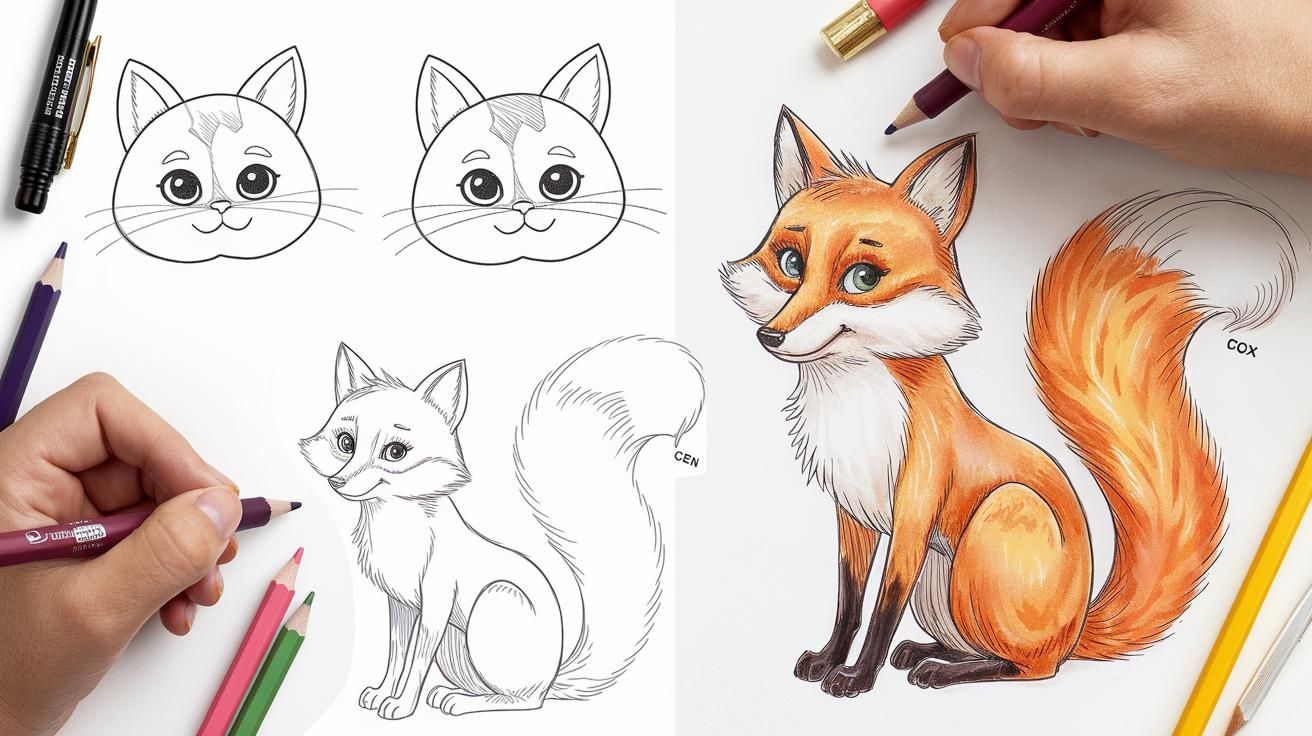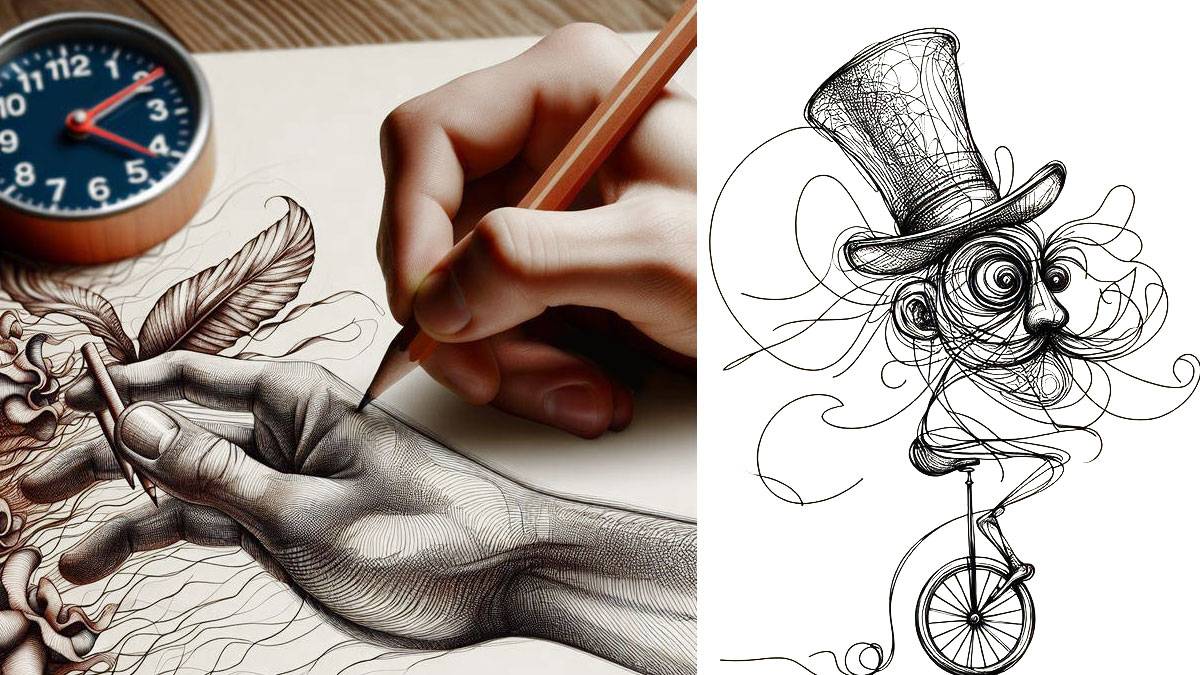Get Creative with These Portrait Drawing Ideas: The Ultimate Beginner’s Guide

A Time-Traveling Adventure in Portrait Drawing

Picture this: I’m standing in front of a mirror, pencil in hand, ready to embark on my first-ever self-portrait journey. Suddenly, a mysterious shimmer appears, and poof! I find myself transported to Renaissance Italy, face-to-face with none other than Leonardo da Vinci himself. Talk about a crash course in portrait drawing!
As I fumbled with my pencil, trying to explain the concept of “selfies” to the bewildered master, I realized that my artistic journey was about to take an unexpected turn. Little did I know, this fantastical encounter would be the beginning of a wild ride through time, space, and the wonderful world of portrait drawing.

The Da Vinci Code of Facial Proportions
Leonardo, as I dreamed, took one look at my lopsided attempt at a self-portrait and nearly fainted. “Mamma mia!” he exclaimed (or whatever the 15th-century equivalent was). “Let me show you the secrets of facial proportions, my time-traveling friend!”
And so began my crash course in the Da Vinci code of faces. Who knew that the distance between your eyes should be roughly the width of one eye? Or that your ears line up with the space between your eyebrows and the bottom of your nose? Mind. Blown.

Action Step: The Egg-cellent Foundation
Leonardo’s first lesson was simple yet revolutionary: start with an egg shape. Not a real egg, mind you (although I did try that once, and let me tell you, it got messy). Instead, he showed me how to sketch a basic oval as the foundation for any portrait.
- Draw a large oval on your paper
- Divide it horizontally into three equal sections
- The top section is for the forehead
- The middle section is for the eyes and nose
- The bottom section is for the mouth and chin
Suddenly, my portraits went from “Is that a potato with eyes?” to “Hey, that actually looks human!” Progress, my fellow art adventurers!
A Cubist Conundrum: When Faces Go Geometric
Just as I was getting the hang of Renaissance proportions, another shimmer appeared, and I found myself in early 20th century Paris. Pablo Picasso greeted me with a mischievous grin, his eyes twinkling with creative madness.
“Forget everything you just learned!” he declared, waving a paintbrush like a magic wand. “We’re going to turn faces into a geometric playground!”
And so began my foray into the wild world of Cubism. Triangles for noses, squares for cheeks, and don’t even get me started on where the eyes ended up. It was like trying to solve a Rubik’s Cube with a blindfold on, but boy, was it liberating!
Expert Insight: The Power of Perspective
Picasso shared a nugget of wisdom that stuck with me: “Art is not truth. Art is a lie that makes us realize truth.” In other words, sometimes breaking the rules of realism can reveal a deeper truth about your subject.
Reader Challenge: Cubist Self-Portrait
Ready to channel your inner Picasso? Grab a mirror and try this:
- Sketch the basic outline of your face
- Now, divide it into geometric shapes (triangles, squares, circles)
- Rearrange these shapes in a way that still resembles you, but with a cubist twist
- Add color if you’re feeling bold!
Remember, there’s no right or wrong here. The goal is to have fun and see yourself from a new perspective!
The Surreal Deal: When Portraits Dream
Just when I thought things couldn’t get any weirder, I found myself in the dreamlike world of Salvador Dalí. Melting clocks adorned the walls, and a mustache that defied gravity greeted me with a twirl.
“My dear time traveler,” Dalí purred, “let us explore the subconscious realms of portraiture!”
And explore we did. We drew portraits where eyes floated in teacups, noses transformed into butterflies, and hair became a cascade of flowing water. It was like my imagination had been given a triple espresso and set loose on the canvas.
Aha Moment: The Beauty of Imperfection
As I struggled to make my surreal portraits look “right,” Dalí shared a perspective that changed everything: “Have no fear of perfection – you’ll never reach it.” Suddenly, the pressure lifted. My wobbly lines and imperfect proportions weren’t flaws; they were part of my unique artistic voice!

Action Step: Dream-Inspired Portraits
Ready to dive into the surreal? Try this dream-inspired portrait exercise:
- Before bed, place a sketchbook and pencil by your nightstand
- When you wake up, immediately jot down any dream fragments you remember
- Use these dream elements to create a surreal self-portrait
- Don’t overthink it – let your subconscious guide your hand!
The results might surprise you, delight you, or even slightly terrify you. But isn’t that what art is all about?
Back to the Future: Modern Portrait Techniques
With a final shimmer, I found myself back in the present day, armed with centuries of artistic wisdom and a slight case of time-travel whiplash. But my journey wasn’t over yet. It was time to explore the exciting world of modern portrait techniques!
Digital Delights: Pixels and Portraits
In this brave new world of digital art, I discovered the joy of creating portraits with a stylus instead of a pencil. No more eraser smudges or accidental coffee spills on my masterpieces!
Pro Tip: Layering for Success
One of the biggest advantages of digital portrait drawing is the ability to work in layers. Start with a rough sketch layer, refine it in a new layer, and add details and color in separate layers. This way, you can experiment freely without fear of ruining your entire piece.
Want to become a pro in 30 days in a fun and easy way? Check out this bestselling resource! It’s packed with step-by-step tutorials and modern drawing techniques that’ll have you creating stunning art in no time.
Mixed Media Madness
Who says you have to stick to one medium? I discovered the joys of combining traditional and digital techniques, creating portraits that were part pencil sketch, part watercolor, and part digital magic.
The Heart of the Matter: Capturing Emotion
As I reflected on my time-traveling portrait adventure, I realized that the most important lesson transcended time periods and techniques. Whether you’re working with Leonardo’s precise proportions, Picasso’s geometric abstractions, or the latest digital tools, the true essence of a great portrait lies in capturing emotion.
Quick Start Guide: Emotional Portraits
- Choose an emotion you want to convey
- Exaggerate facial features that express that emotion (e.g., wide eyes for surprise, furrowed brows for anger)
- Use color and line quality to enhance the mood
- Focus on the eyes – they’re the windows to the soul, after all!
Reader Challenge: The 7-Day Emotion Portrait Challenge
Ready to put your newfound skills to the test? Try this 7-day challenge:
- Day 1: Joy
- Day 2: Sadness
- Day 3: Anger
- Day 4: Fear
- Day 5: Disgust
- Day 6: Surprise
- Day 7: Love
Create a portrait for each emotion, using any technique you like. By the end of the week, you’ll have a gallery of emotions and a much deeper understanding of how to convey feelings through art.
The Never-Ending Canvas: Your Portrait Journey Continues
As my time-traveling adventure came to an end, I realized that the journey of portrait drawing is never truly over. Each face we encounter, each emotion we experience, is an opportunity to pick up our pencils (or styluses) and create something unique.
Remember, art adventurers, there’s no “right” way to draw a portrait. Whether you’re channeling the precision of da Vinci, the wild geometry of Picasso, or the dreamlike surrealism of Dalí, your portraits are a reflection of your unique perspective.

So, grab your tools of choice and start exploring the fascinating world of faces. Who knows? You might just discover a whole new side of yourself in the process. And if you’re looking for more inspiration and step-by-step guidance, don’t forget to check out the Elevated Artistry: 100 Step-by-step Modern Drawing Worksheets and How-To’s. It’s like having a time-traveling art tutor right at your fingertips!
Now, if you’ll excuse me, I have a date with my sketchbook and a mirror. Who knows what wild portraits await? Happy drawing, my fellow art time travelers!
Resource Roundup: Portrait Drawing Essentials
Before you embark on your own portrait drawing adventure, here are some tools and resources to help you along the way:
- A sketchbook (preferably with thick paper for various mediums)
- A set of graphite pencils (2H to 6B for a range of shades)
- Erasers (both kneaded and rubber for different effects)
- A small mirror for self-portraits
- A digital drawing tablet for exploring digital techniques
- The Elevated Artistry Toolkit for step-by-step modern drawing techniques
- A willingness to experiment and have fun!

Remember, the most important tool is your unique perspective. So grab your supplies, channel your inner time-traveling artist, and let’s create some portraits that would make even the great masters do a double-take!





